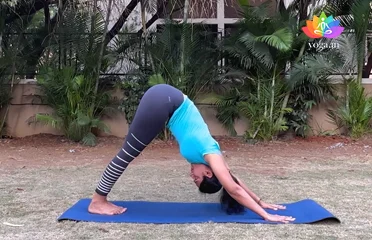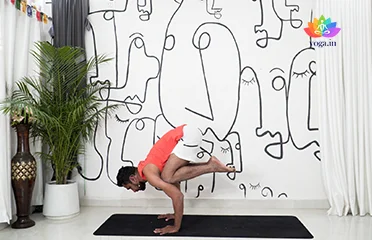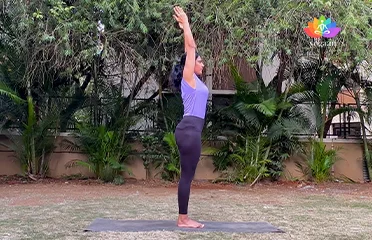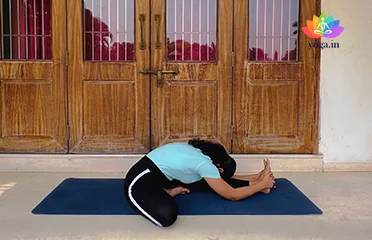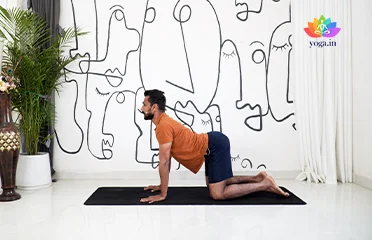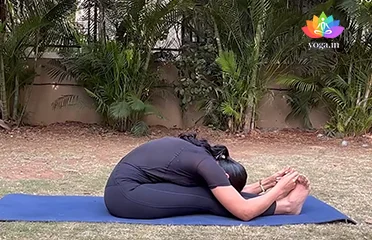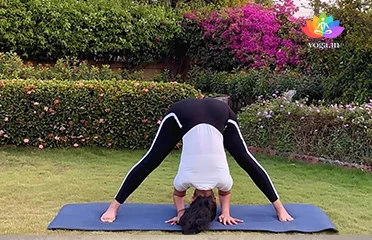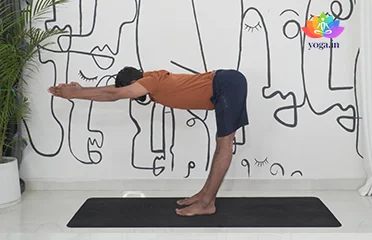Adho Mukha Svanasana (Downward-Facing Do
अधोमुख श्वानासन / Downward-Facing Dog Pose
The sanskrit name is derived from adhas (अधस्) meaning down, mukha [�K]
Bakasana (Crane Pose)
बकासन / Crane Pose
The Sanskrit name is derived from Baka (बक) meaning crane or Kaka (काक) [�K]
Hastapadasana (Hand to Foot Pose)
हस्तपदासन / Hand to Foot Pose
The sanskrit name is derived from hasta (हस्त) means hands, pada (पदा) [�K]
Janusirsasana (Head to Knee Pose)
जानुशीर्षासन / Head to Knee Pose
The Sanskrit name is derived from (जानु) Janu means knee, Sirsa (शीर्षा) [�K]
Marjariasana (Cat Pose)
मार्जरियासन / Cat Pose
The Sanskrit name is derived from Marjari (मार्जरि) meaning cat [�K]
Paschimottanasana (Seated Forward Bend)
पश्चिमोत्तानासन / Seated Forward Bend
The Sanskrit name is derived from three sanskrit words: Paschima (पश्चिमा) [�K]
Prasaritta Padottanasana (Wide-Legged Fo
प्रसारिता पदोत्तनासन / Wide-Legged Forward Bend
The Sanskrit name is derived from Prasārita (प्रसारित) meaning [�K]
Samakonasana (The Right-Angle Posture)
समकोणासन / The Right-Angle Posture
The Sanskrit name is derived from Sama (समा) meaning straight, Kona meaning [�K]
Forward Bend Yoga Poses: Release Tension, Find Flexibility
Forward bends are a fundamental component of yoga practice, offering a multitude of physical and mental benefits. These poses stretch the hamstrings, lower back, and spine, while also calming the mind. Incorporating forward bends into your routine can help improve flexibility, reduce stress, and enhance overall well-being.
Benefits of Forward Bend Yoga Poses
- Improved flexibility: Regular practice of forward bends can significantly increase flexibility in the hamstrings, lower back, and hips.
- Stress reduction: Forward bends are known for their calming effect on the mind, helping to reduce stress and anxiety.
- Digestive aid: Some forward bends can stimulate digestion by gently massaging the abdominal organs.
- Back pain relief: Gentle forward bends can help alleviate back pain by stretching the spine and releasing tension.
List of Forward Bend Yoga Poses
- Uttanasana (Standing Forward Fold): This classic pose stretches the hamstrings, calves, and lower back. It also helps calm the mind.
- Paschimottanasana (Seated Forward Fold): A deeper forward bend, this pose targets the hamstrings, spine, and hips. It can be challenging for beginners, so use props like blankets or straps to assist.
- Pavanamuktasana (Wind-Relieving Pose): While primarily a digestive pose, it also involves a forward bend that stretches the lower back and hip flexors.
- Adho Mukha Svanasana (Downward-Facing Dog): Though considered an inversion, it also offers a deep stretch for the hamstrings and calves.
- Janu Sirsasana (Head-to-Knee Forward Bend): This pose deeply stretches the hamstrings and spine on one side of the body.
- Supta Padangusthasana (Reclining Hand-to-Big Toe Pose): A therapeutic pose that stretches the hamstrings and lower back while lying down.
Tips for Practicing Forward Bend Yoga Poses
- Start gently: Begin with easier variations and gradually increase the depth of the fold as your flexibility improves.
- Listen to your body: Avoid forcing yourself into a deep fold. Respect your body’s limitations.
- Use props: Blankets, blocks, or straps can be helpful in assisting with deeper stretches.
- Focus on breath: Deep and steady breathing helps to relax the body and mind during forward bends.
- Combine with backbends: Balancing forward bends with backbends promotes spinal health.
Common Challenges and How to Overcome Them
- Tight hamstrings: Use props like blankets or blocks to support your body and gradually increase flexibility.
- Lower back pain: Avoid rounding the lower back. Focus on hinging at the hips and lengthening the spine.
- Lack of balance: Practice with a wall for support initially. As your balance improves, you can move away from the wall.


